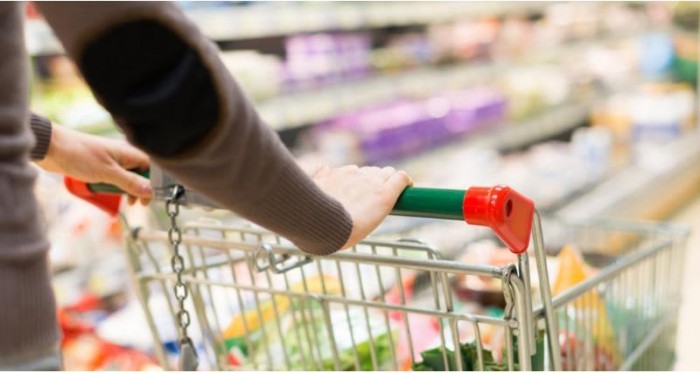Supermarket sales have increased by 3.6% compared with the same period last year, according to the latest grocery market share figures from Kantar Worldpanel, published today for the 12 weeks to 10 September 2017. This is the sixth consecutive month in which sales have increased by more than 3%.
Fraser McKevitt, head of retail and consumer insight at Kantar Worldpanel, said: “We haven’t seen sustained market growth of this kind since May 2013. A 1.5% increase in the volume of goods going through the tills has contributed to this growth while the remainder of the overall sales increase is down to higher prices. Like-for-like grocery inflation now stands at 3.2%, slightly ahead of the headline CPI rate and down 0.1 percentage points on last month. The average British household spends almost £4,200 in the grocers each year so a fall in inflation, which we expect to see as we approach the end of the year, will be a welcome relief.
“Disappointing August weather – even allowing for the mini-heatwave over the bank holiday – meant a difficult month for traditional summer categories. Sales of prepared salad fell 6% while both scotch eggs and sun care were down 16%. In contrast the public spent almost £4 million on cold treatments in August – an increase of almost £2 million on that spent in the same month last year.”
Lidl once again wins the title for fastest growing retailer – a sales increase of 19.2% has taken its market share to a record high of 5.3%, up 0.7 percentage points on last year. Growth was particularly notable among fresh and chilled products such as dairy as well as in white and rosé wines, where Lidl is growing ahead of the market. Meanwhile, Aldi’s sales growth of 15.6% took its market share to 6.9%.
McKevitt said: “Collectively Aldi and Lidl now account for nearly £1 in every £8 spent in Britain’s supermarkets – a decade ago this was only £1 in £25. In the past three months almost 63% of shoppers visited one of the two retailers, up from a level of 58.5% last year.”
Despite the growth of the discounters, 98% of households still shopped in at least one of the traditional big four retailers over the same three-month period.
“Tesco’s recovery is becoming more entrenched,” said McKevitt. “Sales have grown continually since April this year and are up by 2.7% in the past 12 weeks, though the retailer’s market share remains under pressure, squeezed by 0.3 percentage points to 27.8%. At Morrisons volume sales have risen for the first time since January and sales of its premium ‘The Best’ line are up 38% year-on-year, making it the fastest growing premium range in a market where top-tier products are outperforming all other lines.”
Sainsbury’s market share fell 0.2 percentage points to 15.7% despite an average sales increase across its convenience, supermarket and online channels of 2.1%. The retailer’s strategic move away from temporary promotions continues and only 35% of consumer spend is now on promoted items; this time last year the figure stood at 41%, which remains the average for the rest of the big four.
Asda has attracted an additional 482,000 shoppers through the tills compared with a year ago – the fastest new shopper acquisition by the retailer in over three years. “Average spend at Asda is £25.74 – the highest of any grocer – which reflects the success of its larger stores and their appeal for families,” said McKevitt.
Sales increased at Iceland for an 18th consecutive period and are now up 4.0% on a year ago, though market share has remained flat at 2.1%. After months of strong growth in less traditional lines such as fresh produce and dairy Iceland’s core frozen ranges gave it a significant boost, growing by 6% and accounting for 41% of sales.
Despite announcing a fall in profits last week, Waitrose’s sales increased by 2.4%. The retailer has retained a 5.3% share of the market and is currently level with Lidl, though the discounter’s rapid growth rate means the share gap is expected to re-open in the coming months.
Co-op sales fell for the second month in row, taking market share down 0.3 percentage points to 6.3%. Ocado grew sales by 10.1%; 834,000 households shopped with the retailer in the latest 12 weeks, giving it its highest ever penetration of the population.




